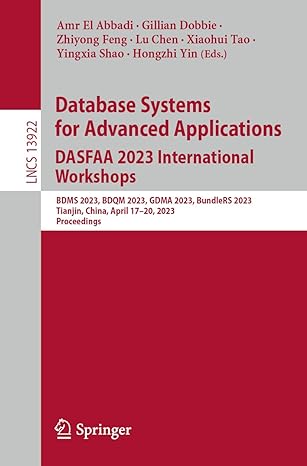Question
RUBY In this lab, we're going to practice building our own versions of the Enumerable methods that do map-like and reduce-like work. In coding these,
RUBY
In this lab, we're going to practice building our own versions of the Enumerable methods that do map-like and reduce-like work. In coding these, we'll sense the non-DRY (Don't Repeat Yourself) quality of writing map- and reduce-based functions and want a better way. You should not use the built-in Ruby methods map or reduce to solve this lab.
It's also a chance to know that if we ever go to a language that doesn't have awesome Enumerables built-in, we could write a replacement function easily.
For the next few lessons, we're only going to talk about Enumerables in the context of Arrays. While Hashes also feature methods that follow the "Character of Enumerable Methods," for ease of learning, we're going to focus only on Arrays.
Define map
As mentioned in the "Character of Enumerables," we need to visit each member of a collection. This is common to all Enumerable methods. In the case of map, we're going to produce a new Array after "transforming" or applying "work" to each element. An example would be "multiply each number in this Array by -1, returning a new Array of the input Array "negative-ized."
Here's a tabular representation:
| Operation | Element 0 | Element 1 | Element 2 |
|---|---|---|---|
| Base Set | 1 | 2 | 3 |
| "Negativize" Function Result | -1 | -2 | -3 |
Grand Result = [-1, -2, -3]
Naming History "Map" comes from mathematics where it means:
- Taking an independent variable
- Plugging it into an equation
- Getting a result back
Mathematicians would say you're mapping a value in the domain to a value in the range.
If this sounds vaguely familiar, you might have learned it in algebra when learning to graph on the Cartesian coordinate system.
- Take a value on the x axis
- Plug it into a function like y=mx + b
- Get a y value
Hopefully you're having an "Ah-hah!" moment from that and might be considering sending your algebra teachers a thank-you note.
Define reduce
As mentioned in the "Character of Enumerables," we need to visit each member of a collection. This is common to all Enumerable methods. In the case of reduce, we're going to accumulate the results of the "work" to produce a new, single value. An example would be "sum up an Array of numbers." You combine each element into the new aggregate total by updating the aggregate by using an expression like total = total + current_element. This updating an aggregator value and returning it at the end is the essence of reduce.
The reduce function should be given a starting point as an argument.
Here's a tabular representation of reduce-ing an Array of [1, 2, 3] with a starting point of 0.
| Operation | Element 0 | Element 1 | Element 2 |
|---|---|---|---|
| Base Set | 1 | 2 | 3 |
| Add to previous result function result | 1 | 3 | 6 |
Grand Result = 6
Naming History This idea of "reduce" comes from lots of places, but we like to think about it coming from the realm of cooking where we make a "reduction" by applying work (aka "heat") until what's left over is the thing we want.
Lab
Inspired by @steveluscher
In this lab, we're going to write several map-like and reduce-like methods and put them in lib/my_code.rb:
map-like
- map_to_negativize(source_array)
- map_to_no_change(source_array)
- map_to_double(source_array)
- map_to_square(source_array)
Remember, all map methods return a new Array.
reduce-like
- reduce_to_total(source_array, starting_point)
- reduce_to_all_true(source_array)
- reduce_to_any_true(source_array)
Remember, all reduce methods return a value.
Step by Step Solution
There are 3 Steps involved in it
Step: 1

Get Instant Access to Expert-Tailored Solutions
See step-by-step solutions with expert insights and AI powered tools for academic success
Step: 2

Step: 3

Ace Your Homework with AI
Get the answers you need in no time with our AI-driven, step-by-step assistance
Get Started


